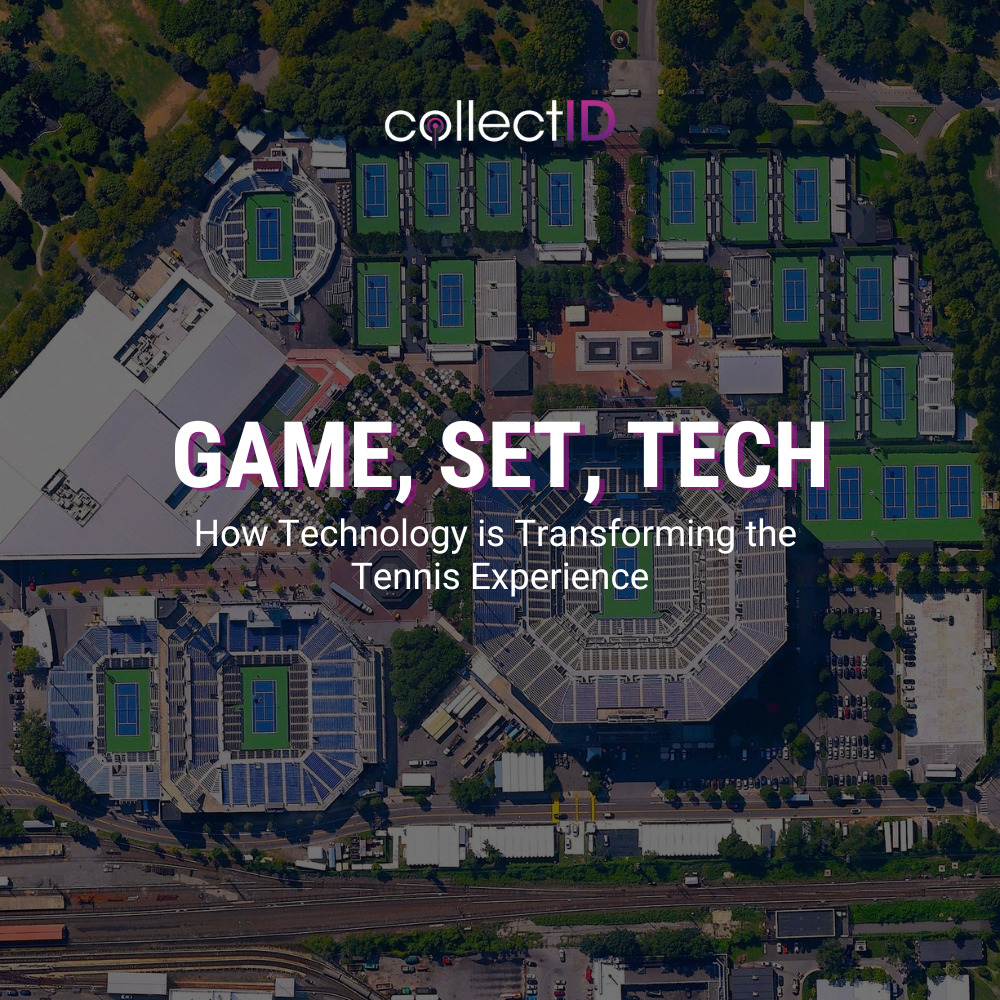The US Open is now in full swing, and with technology advancing at an ever-accelerating pace, its influence on the tournament has never been more pronounced. Join us as we delve into how technology is revolutionizing experiences for spectators and players alike!

How Technology is Enhancing the Fan Experience
As technology continues to advance, it’s no surprise that it has a major impact on the way we experience sports. One area in particular where we’re seeing significant improvements is in the world of tennis. From IBM’s Draw Analysis AI to new video reviews for chair umpires, technology is truly enhancing the fan experience in countless ways.
a. AI-Generated Spoken Commentary
To no surprise, AI is playing a major role in enhancing the fan experience at the US Open this year. In a partnership with USTA, IBM is utilizing its AI platform, watsonx, to provide dynamic audio narration and captions for highlight videos featured across the U.S. Open’s digital platforms. These real-time voice updates go beyond mere scores, offering insights into the gameplay’s nuances and highlights.
IBM’s Draw Analysis AI is a groundbreaking statistic tool for tennis, analyzing player strengths, weaknesses, historical performance, and potential paths to victory. Moreover, the AI assesses each player’s real-time performance, enabling a richer audio feed for fans worldwide. These AI-powered enhancements complement existing tools like the IBM Power Index Leaderboard, Match Insights, and Personalized Highlights Reels on the Wimbledon App and website.
As AI continues to shape and enhance various facets of the tennis world, its influence on the sport’s future is becoming increasingly pronounced.
b. Social Media Integration
In the era of pervasive social media, platforms like Twitter and Instagram provide athletes the opportunity to connect with fans in a more personal and meaningful way. Whether it’s simply talking to fans on their Instagram story, sharing elements of their personal life, or highlighting various partnerships, social media provides a unique athlete-to-fan connection that makes cheering these tennis stars on even more enjoyable for fans when it comes down to match time.

Credit: Michelle V. Agins/The New York Times
This social media fervor amplifies the influence of these events, turning them into trending topics and cultural touchpoints. This represents a golden prospect for brands to forge partnerships with the athletes and even the event’s attendees, seamlessly integrating their products into the glamorous narrative. By doing so, brands can harness the power of both the physical event and its digital reverberations, cultivating brand visibility and resonance among a global and engaged audience.
How Technology is Improving the On-Court Experience
While technological developments are enhancing the fan experience, there are also numerous technologies revolutionizing the player experience as well. While some argue that technology has taken away from the human element of the sport, there is no denying that it has also made the game more accurate and fair.
a. Video Review Technology
One technology shaking things up at the US Open this year in particular is the new Video Assistant Referee (VAR) technology. The video review technology will assist chair umpires when a player challenges a specific set of judgment calls such as double bounces and foul shots. This technology is certainly a game changer as it is expected to eliminate human error from judgment calls should a player choose to challenge a call.
The introduction of the video review technology initially received positive feedback, However, after malfunctioning in its debut on a crucial call in a first-round match between Andy Murray and Corentin Moutet, fans were outraged by this new technology.

The malfunctioning of the technology in such a high-stakes moment might pose a challenge in regaining trust and favor for the system. Yet, as with any technological innovation, a period of adaptation and refinement is often necessary before widespread acceptance can be achieved.
b. Hawk-Eye Line-Calling System
While not a brand-new addition to the world of tennis, the Hawk-Eye Line-Calling System has been an innovative addition to the tennis world to determine whether the ball is in or out. It relies on multiple camera angles to meticulously trace the tennis ball’s path, merging them to create a precise 3D model of its trajectory.

In an interesting turn of events in 2020, the US Open made a significant change by introducing Hawk-Eye Live on 15 out of 17 match courts. This upgraded version of the system can make instant automated calls in real time, and it quickly gained widespread acceptance at the US Open.
Implications of Technology on Tennis as a Sport
Technology has undoubtedly had a significant impact on tennis as a sport in recent years. From the introduction of AI to the new video review technology, these advancements have revolutionized the fan experience and how players and coaches approach the game.
However, it remains to be seen what further implications technology will have on tennis in the future and how it will shape the game for generations to come.
a. Increase in Popularity Among Younger Fans
In recent years, there’s been an exciting rise in the popularity of tennis among younger fans. This surge is thanks in large part to the influence of social media platforms like Instagram and TikTok, which have become central to the digital world. These platforms have become essential touchpoints for the younger generation, drawing them into the world of tennis.

What used to feel like a distant gap between tennis stars and their young fans has now been bridged by the active presence of these athletes on social media. Through platforms like Instagram and TikTok, these players have gone from being distant figures to relatable personalities. By sharing glimpses of their lives beyond the tennis court, they’ve created a genuine connection that resonates with the younger audience.
But it’s not just about the game anymore. Tennis has broken free from its traditional boundaries. The presence of celebrities and social media influencers at tennis events has turned the sport into a cultural phenomenon. It’s no longer confined to the court – it’s a whole experience that includes entertainment, fashion, and lifestyle.
To sum it up, the allure of tennis for the younger generation is intertwined with the digital world. Social media has brought tennis stars closer to their fans, transforming them into companions on a shared journey. The mix of celebrities and influencers at tennis events has given the sport an extra boost, making it a cultural spectacle. This exciting relationship between tennis and the youth promises a bright future, where generations come together and the love for the game continues to grow.
b. Shifting Player Expectations
The incorporation of video review technology in tennis has significantly shifted player expectations across the sport. With more opportunities for fair and accurate calls, players can focus on their skills and strategy rather than the fear of a flawed call costing them the game. While it may take some time to work through malfunctions in the technology, the shift towards implementing video review technology continues to grow, ultimately changing the way players approach matches.
The Future of Technology in Tennis
In the evolving landscape of tennis, athletes have taken on roles beyond the court as influential public figures. This transformation has been amplified by the rise of social media, where athletes have become “influencers,” a shift further accentuated by the growing intersection of sports and fashion. Notable tennis stars such as Naomi Osaka and Coco Gauff have not only excelled in their sport but have also launched their own fashion lines, showcasing a new dimension of their personal brands.

Looking ahead to the future, an intriguing avenue emerges at the nexus of technology and tennis fashion. Envision incorporating NFC tags into their clothing, offering dedicated fans access to exclusive behind-the-scenes content, exciting giveaways, and special offers. This innovative integration of technology and tennis not only pushes conventional boundaries but also enriches the fan experience, forging an unparalleled connection between players and their supporters.
Without a doubt, the US Open demonstrates how technology can be utilized in the most creative ways. But it’s important to keep in mind the effects of this technology on both players and fans. Every sports league should take note that increased levels of technology has and will continue to have an impact on the performance, fan experience, media partnerships, and expectation for athletes. So whether as spectators or participants involved in tennis at any level, it is our collective responsibility to consider all implications of technological advances while still enjoying its positive impacts on the beloved game.















